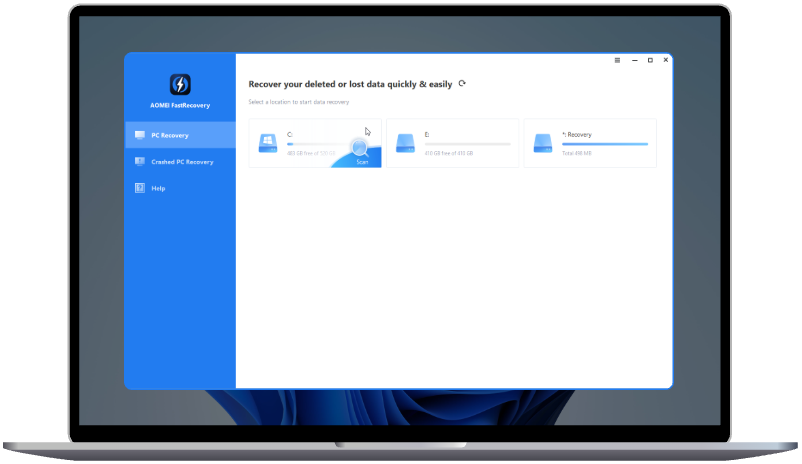How to Automatically Delete Duplicate Files Windows 10
You may delete duplicate files using Windows 10 File Explorer. Feel time-consuming? In this article, you will learn how to automatically delete duplicate files Windows 10 with a reliable tool.
What are duplicate files in Windows 10?
Duplicate files on Windows 10 refer to identical copies of a file that exist in more than one location on your computer's storage. These duplicates can accumulate over time and consume valuable disk space without providing any real benefit. Duplicate files may occur due to various reasons, such as unintentional copying, downloading the same file multiple times, or creating backups without removing the original files.
Common types of duplicate files include:
◆ Identical files: Exact copies of a file with the same content, name, and extension.
◆ Similar files: Files that are similar but not necessarily identical. This category may include files with slight variations, such as different resolutions for images or slightly edited versions of documents.
◆ Backup copies: Duplicate files are created during backup processes, especially if you use backup tools that make full copies of your data.
◆ Temporary files: Duplicate files that are created as temporary copies during software installation or system operations.
Windows 10 itself has some basic built-in features to help you find and manage duplicates like File Explorer that you can use to find files with the same name or extension, but this method may not be very efficient for large amounts of data.
How to delete duplicate files using Windows 10 File Explorer
How to delete duplicate files in Windows 11 or Windows 10? Follow these simple steps:
Step 1. Start by navigating to the lower-left corner next to the Windows icon. Enter "Indexing Options" into the search bar and then click on the corresponding result.
Step 2. Click on "Modify" and opt for "Show all locations". A pop-up will prompt you for login details; ensure you're using an administrator account for any modifications.
Step 3. Verify if all boxes are ticked under the "Changed selected locations" section. If affirmative, click "OK", followed by the "Close" button. If not, ensure all boxes are checked.
Step 4. Press both the Windows key and E key simultaneously to launch File Explorer. It's more convenient to locate files under your user account. Navigate to Windows (C:) and select the Users folder.
Step 5. Click on "Search" in the upper-right corner, entering file extensions such as .jpg, .jpeg, .png, .gif, .bmp, .tiff, .psd, .raw, .svg, .ico, and .webp.
1. Organize the search results by Name:
2. Navigate to the "View" tab.
3. In the "Panes" section, select "Preview pane".
4. Under the "Layout" section, choose "Details".
5. In the "Current view" section, click "Group by", and choose "Name".
6. To arrange files in ascending order, click "Group by", and opt for "Ascending".
Step 6. Scrutinize the files to identify duplicates saved in different locations. Refer to the "Date modified" column to pinpoint the latest version of each file.
Step 7. Upon reviewing the files, select the one you wish to delete, and then press the DELETE key on your keyboard.
How to automatically delete duplicate files Windows 10?
Finding and removing duplicate files manually can be time-consuming and error-prone, especially if your storage is large. Given the variety of file types on your computer, including not just images and music, manual methods include checking and deleting various file formats, each of which may have many file names.
To simplify and enhance the process of freeing up disk space, it is recommended to use a professional tool such as AOMEI Partition Assistant Professional. This advanced utility goes beyond the limitations of manual searches by performing a comprehensive scan of all drives while compiling a detailed list of various duplicate files. With its user-friendly interface and powerful features, AOMEI Partition Assistant provides an effective solution to easily identify and automatically delete duplicate files Windows 10.
Step 1. Install and open AOMEI Partition Assistant Professional and then select "Duplicate File Finder" from the "Free up" tab.
Step 2. On this interface, you will see a display of all partitions on your computer. Customize the scan settings to your liking and click Scan. Note that even if the partition is locked, the program will still scan it and display the duplicate files found. However, duplicate files on a locked drive cannot be removed.
Step 3. Once the scanning process is complete, all duplicate files matching the criteria you specified will be listed. To preview these files, click the Preview button.
Step 4. Select the duplicate files you want to delete manually or choose the convenient Smart Select feature to automatically mark duplicate files. Then click "Move to Folder". You will finish the process of how to delete duplicate files in a folder Windows 10.
Conclusion
Windows File Explorer is a great tool to find and remove duplicate files. But if you want to automatically delete duplicate files Windows 10, a reliable duplicate files finder like AOMEI Partition Assistant Professional would be the best choice.
In addition, AOMEI software is also welcomed by many other features such as resizing/moving partitions, deleting large files, cloning disks, etc.


